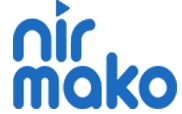The Key to Success: Strategic Alignment and Leadership Development
In today’s rapidly evolving business environment, industries are undergoing significant transformations. Artificial intelligence is omnipresent, the workforce is constantly shifting, and economic conditions can feel unpredictable. Managing a business is undoubtedly challenging, but exceptional leaders understand one fundamental truth: regardless of market changes or emerging technologies, the foundation of a thriving business remains consistent—strategic alignment and leadership development.
Organizations that neglect to foster strong leadership and fail to align their teams around a shared vision often face inefficiencies and disengaged employees. These challenges make it harder for them to adapt to current demands or capitalize on future opportunities.
Empowering Leaders for Long-Term Success
Investing in leadership development is an investment in the resilience and sustainability of an organization. Companies that prioritize their leaders often experience higher employee engagement, improved satisfaction, better retention rates, and a culture centered on excellence and continuous growth.
Effective leadership goes beyond decision-making; it involves inspiring teams, encouraging innovation, and guiding the organization through turbulent times. These are skills that require deliberate cultivation.
Comprehensive leadership development programs equip both current and future leaders with the tools and knowledge they need to overcome obstacles, inspire their teams, collaborate effectively, and generate innovative ideas that fuel sustainable growth.
Why Strategic Alignment Matters
Strategic alignment serves as the backbone of a cohesive leadership team and ensures the entire organization moves toward shared objectives. It involves aligning every team member with the company’s overarching goals, resulting in benefits such as enhanced efficiency, improved decision-making processes, and greater employee satisfaction.
Without strategic alignment, organizations risk fragmentation, with teams or individuals working in isolation rather than collaboratively. This lack of cohesion often leaves employees uncertain about how their roles contribute to the company’s success, leading to disengagement and reduced morale.
By fostering a unified approach where every team member feels valued and aligned with common goals, organizations can maximize resources, eliminate inefficiencies, and streamline operations. Furthermore, cultivating a sense of purpose within the team strengthens company culture and sets the stage for long-term success.
Building a Foundation for Growth
Achieving strategic alignment and cultivating strong leadership doesn’t happen by accident—it requires intentional effort, dedication, and structured training. However, businesses that commit to aligning their vision and investing in leadership development lay a solid foundation for enduring success.
If you’re ready to implement a strategic alignment and leadership development program in your organization, consider StratPro—a series of workshops from The Alternative Board (TAB) designed specifically for business leaders and their teams. StratPro combines expertly facilitated sessions on leadership development with proven strategic tools and structured follow-ups to define goals, align leadership teams, and ensure accountability.
What’s the result? A focused, aligned team prepared to drive transformation within your business. Explore StratPro today or schedule a free 90-minute Discovery Workshop to learn more.
This rewritten version retains the original meaning but uses rephrased language to ensure uniqueness while maintaining clarity. Let me know if further adjustments are needed!


לפתור את דילמת הניסיון
אחת הדילמות בגיוס עובד חדש לעסק, היא מידת הניסיון שלו. האם לגייס עובדים משופשפים ובעלי ניסיון? מצד אחד, אנחנו מקווים שהניסיון יסייע להם להיכנס לתפקיד בצורה חלקה יותר ולהניב ביצועים טובים יותר. מצד שני, סביר להניח שדרישות השכר שלהם יהיה גבוהות יותר והם יהיו בעלי נכונות נמוכה יותר לשנות הרגלים מקצועיים שכבר התקבעו. האם לגייס ג’וניורים שמצויים בתחילת דרכם המקצועית? מצד אחד דרישות השכר שלהם יהיו נמוכות יותר, המוטיבציה כנראה תהיה בשמיים וגם היכולת לעצב את ההתנהלות המקצועית שלהם בהתאם לתרבות הארגונית תהיה גבוהה. מצד שני, תהליך הלמידה של הג’וניורים עשוי להיות ארוך יותר, ובהיעדר ניסיון קודם הם מגיעים בלי קבלות מוכחות בתפקיד.
אז מה עושים? כמובן שהתשובה משתנה בהתאם לצרכי העסק – מתקציב השכר והמטרות העסקיות ועד התרבות הארגונית שהגדרתם. כך או כך, חשוב להביא בחשבון את מכלול השיקולים, ולהגדיר מראש את רמת הניסיון הרצויה.
להשתמש בכלים לאבחון אפקטיבי
כמו שכבר הבנו, הנזק הפוטנציאלי שגורמת טעות בגיוס יכול להיות עצום, ובעסק קטן ובינוני יש מרווח קטן מאוד לטעויות. לכן, לאחר שהגדרתם את דרישות העסק והתפקיד, חשוב לוודא שאתם בוחרים עובדים ש”תפורים” על צרכים אלו. איך עושים את זה? באמצעות בחירת כלי אבחון שיאפשרו לכם לבנות פרופיל אישי ומקצועי של המועמד – ולבחון את מידת התאמתו לפרופיל של העסק. גם אם השימוש בכלים אבחוניים יצריך הקצאת משאבים גדולה יותר – הפוטנציאל של גיוס מוצלח שיתרום לצמיחה העסקית אל מול הנזק האפשרי, אמורים להצדיק את ההשקעה.
יש מנעד רחב של כלים אבחוניים שיכולים לסייע לכם במלאכה, ממבחני אישיות דוגמת מודל DISC ועד ניתוח גרפולוגי. רוצים לדעת עוד על הכלים האבחוניים? נשמח לשוחח ולשתף מתוך הניסיון שלנו בליווי מאות עסקים קטנים ובינוניים.
בשורה התחתונה, סוף גיוס במחשבה תחילה. הקדשת מחשבה לתהליך הגיוס רגע לפני שיוצאים לדרך תסייע לכם למצוא את השידוך המושלם – עבורכם ועבור העובד.
